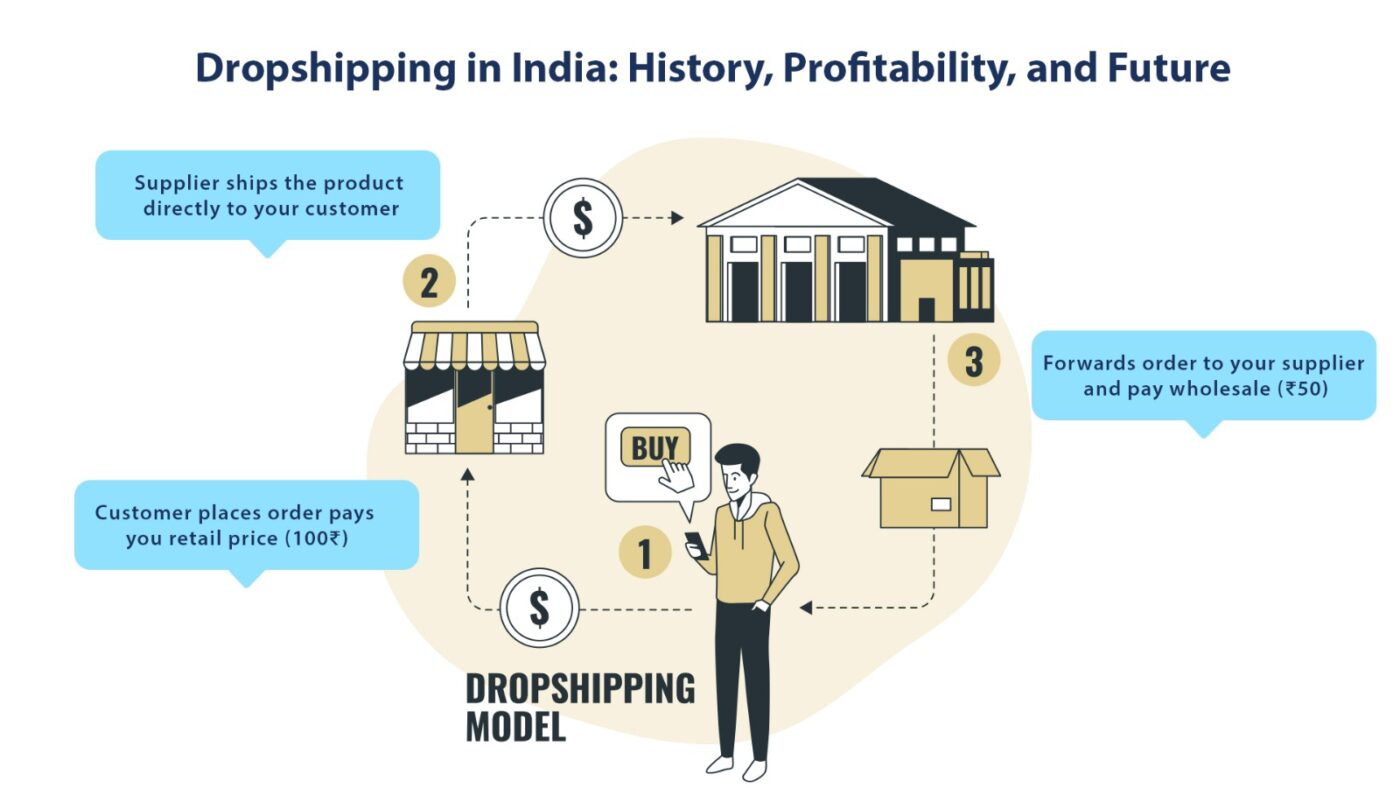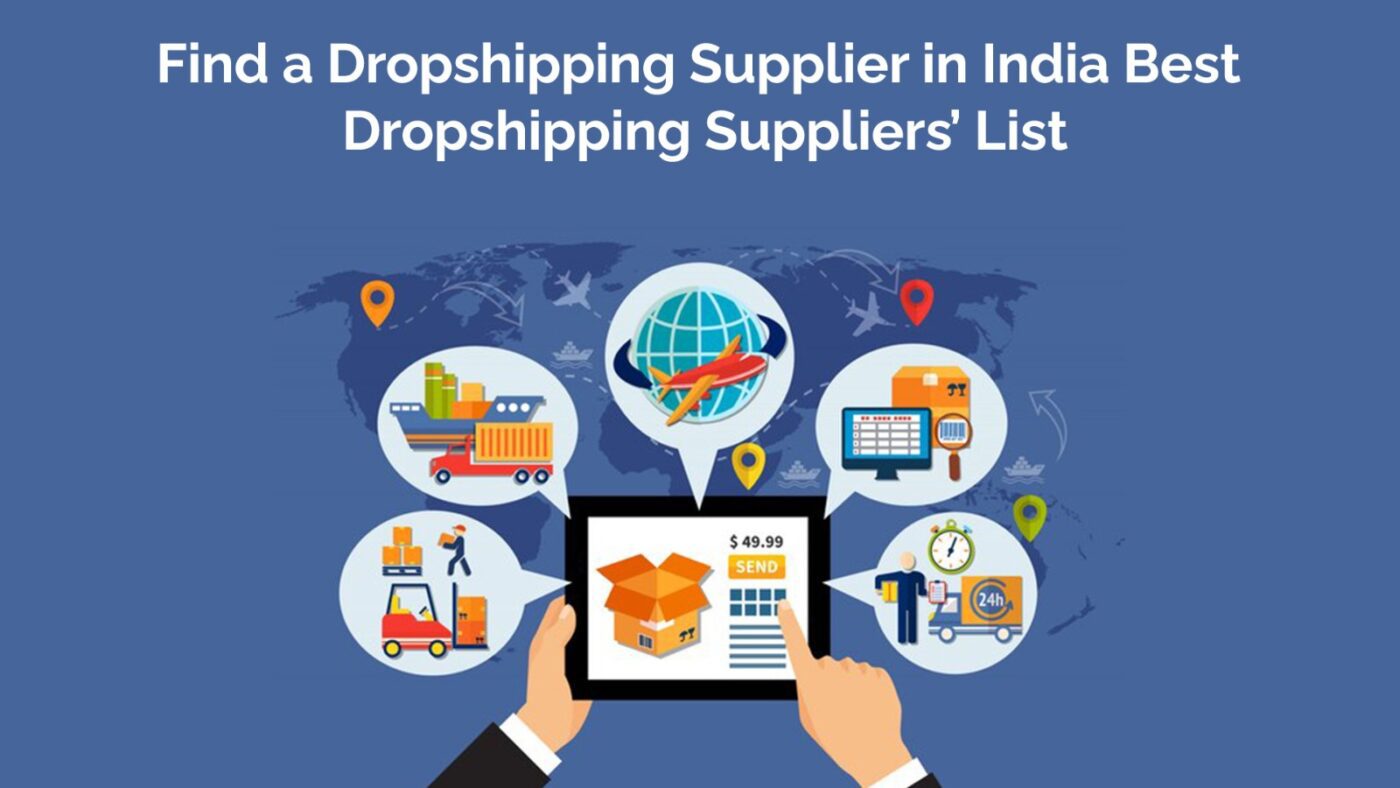Dropshipping is a retail fulfillment method that has gained immense popularity in India, especially with the rapid growth of the e-commerce industry. This business model allows entrepreneurs to start an online store without the need to invest in inventory or worry about shipping logistics. In this blog, we will explore the history of dropshipping in India, its profitability, the challenges and opportunities it presents, legal considerations, predictions for the future, success stories, and valuable tips for aspiring entrepreneurs.
History of Dropshipping in India
Dropshipping made its way into the Indian market in the early 2000s, but it wasn’t until the mid-2010s that it experienced significant growth and adoption. The rise of e-commerce in the country created a conducive environment for dropshipping businesses to thrive. With e-commerce platforms gaining momentum, more entrepreneurs saw the potential in adopting this model, leading to a surge in dropshipping ventures.
Factors Contributing to the Growth of Dropshipping in India
Several factors played a crucial role in the growth of dropshipping in India
E-commerce Expansion: India witnessed an exponential growth in online shopping as more people gained access to the internet and smartphones.
This digital transformation opened up new opportunities for dropshipping businesses to reach a vast customer base.
Reliable Dropshipping Suppliers: The emergence of reliable dropshipping suppliers in India facilitated smoother operations for businesses. These suppliers offer a wide range of products, ensuring sellers can cater to diverse customer demands efficiently.
Social Media Marketing: Social media platforms became powerful tools for marketing and advertising products. Dropshipping businesses leveraged these platforms to target their audience, leading to increased visibility and sales.
Challenges and Opportunities
While dropshipping presents numerous advantages, it also comes with challenges, including:
Intense Competition: With the popularity of dropshipping, the competition has intensified. To succeed, entrepreneurs must differentiate their offerings and focus on niche markets.
Infrastructure and Logistics: India’s vast geography and diverse customer locations can pose logistical challenges. Efficient supply chain management is vital to ensure timely deliveries.
Customer Service and Quality Control: As sellers are not directly handling products, maintaining quality control and addressing customer service queries effectively is critical for building trust and loyalty.
Despite the challenges, there are promising opportunities for dropshipping businesses:
Untapped Niche Markets: India’s diverse population offers a range of untapped niche markets. Identifying and catering to specific customer needs can lead to significant growth.
Expanding Customer Base: As more Indians embrace online shopping, the potential customer base for dropshipping businesses continues to grow.
Leveraging Innovative Marketing Strategies: Creative marketing techniques and collaborations can give businesses a competitive edge in the market.
Is Dropshipping Profitable in India?
When it comes to e-commerce, dropshipping has emerged as a profitable and promising business model in India. With projections showing a robust compound annual growth rate (CAGR) of 30% from 2022 to 2027 for the dropshipping market, entrepreneurs are eager to explore the potential it holds.
The Growing Indian E-commerce Market
One of the driving forces behind dropshipping’s profitability in India is the country’s rapidly expanding e-commerce market. Boasting a remarkable CAGR of 25% from 2021 to 2025, this thriving sector owes its success to multiple factors. As internet penetration increases, more Indians are gaining access to online platforms, fueling the popularity of online shopping. Additionally, rising disposable incomes have empowered consumers to indulge in convenient and hassle-free purchases from the comfort of their homes.
Abundance of Dropshipping Suppliers in India
The availability of numerous dropshipping suppliers is a boon for businesses seeking to venture into this model. In India, entrepreneurs can easily find suppliers offering an extensive range of products, from trendy fashion apparel to cutting-edge electronics and practical home goods. This abundance of suppliers streamlines the process of product sourcing, allowing businesses to swiftly and efficiently cater to the diverse demands of their customers.
The Advantage of Low Overhead Costs
Dropshipping’s appeal lies not only in its convenience but also in its cost-effectiveness. With this business model, entrepreneurs can sidestep the need to invest in large inventories or manage warehouses. By eliminating these significant overhead costs, businesses can focus on optimizing their operations and ultimately boost their profit margins. The ability to run a lean and agile operation is a compelling advantage that has attracted many aspiring entrepreneurs to dive into the world of dropshipping.
Legal and Regulatory Considerations
Starting a dropshipping business in India requires compliance with certain legal requirements:
Taxation and Customs Regulations: Understanding tax implications and customs regulations for imported products is essential for smooth operations.
Compliance with E-commerce Guidelines: Adhering to e-commerce guidelines and consumer protection laws ensures ethical practices and builds trust among customers.
The Future of Dropshipping in India
The future of dropshipping in India appears promising. With the e-commerce market projected to grow exponentially, dropshipping will likely witness sustained demand. Moreover, the government’s support for the e-commerce industry will create a favorable environment for dropshipping businesses to flourish.
Success Stories and Case Studies
Numerous dropshipping success stories have emerged in India. Giants like Myntra, Flipkart, and Amazon India have demonstrated the immense potential of the dropshipping model. Their success lies in delivering quality products, offering a seamless shopping experience, and building strong brand identities.
Tips for Starting a Dropshipping Business in India
For entrepreneurs aspiring to venture into dropshipping, these tips can be invaluable:
Conduct In-Depth Research: Thoroughly research market trends, customer preferences, and potential suppliers before starting the business.
Choose the Right Products: Focus on products with high demand and reasonable profit margins to ensure a sustainable business model.




